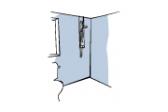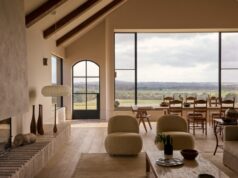
Often the most comfortable type of shower is one without a stall at all. Wet rooms are especially useful in small bathrooms and for people with mobility impairments.
Sometimes, the best shower is one with no stall at all. Most showers confine the water to a limited area inside a shower stall or bathtub. The advantage of those types of showers is that the water is easily contained, and drainage is far easier to manage. With a wet room, an entire area is treated as a large shower stall.

How a wet room works
Wet rooms are basically the same as a regular shower stall, only without the stall. They use the same types of shower heads, the same tiled splashback walls, and in most cases the same sorts of sealed floor surfaces. The lack of shower screens means that extra attention needs to be paid to ensure that proper waterproofing is installed throughout the entire wet room though, as it’s likely to splash far and wide. Likewise, the entire floor should be sealed, and sloped down towards a drain in a way that ensures water doesn’t collect and pool on the floor. While wet rooms don’t typically incorporate shower screens, they do often feature shower curtains to provide some degree of control over how far water is spread.
Wet rooms as a design feature
Wet rooms are an excellent way to make the most of a small space. If you have a small bathroom (particularly if you live in an apartment), shower screens can really limit your comfort in an already confined area. Doing away with shower screens altogether and treating the entire area as one large shower stall allows you to make the most of the available space at all times.
Wet rooms offer a luxurious option in larger bathrooms too, allowing open, unbroken spaces and continuous lines throughout the room, as well as doing away with the need to install extra lighting for a shower stall.
Fittings and fixtures in wet rooms
If you are installing a wet room, one of the things you will need to take into account is the positioning of the other fittings and fixtures in your bathroom – in particular, where towel racks, electrical sockets and light switches are located. These should all be installed well away from any area that is likely to be splashed when people are showering. In smaller bathrooms, this might mean installing switches outside the bathroom, and placing towel racks high up on the wall or on the back of the bathroom door.
Wet rooms for disabled people
Wet rooms are particularly appropriate for disabled people and those witih mobility impairments. Not only do they allow people to shower without having to step in or out of a bath or shower stall, but they also allow large amounts of space in which to position chairs, supports and grab rails.





